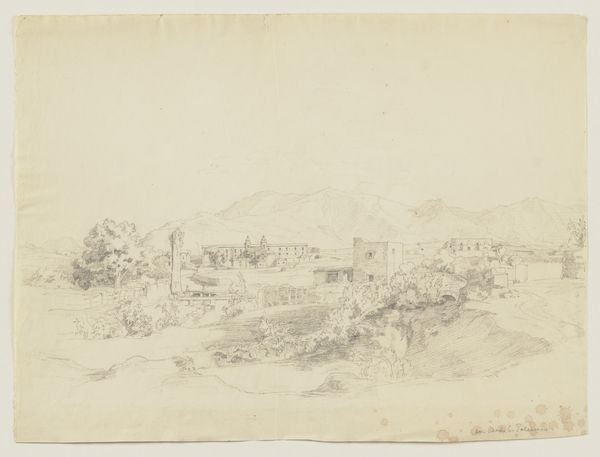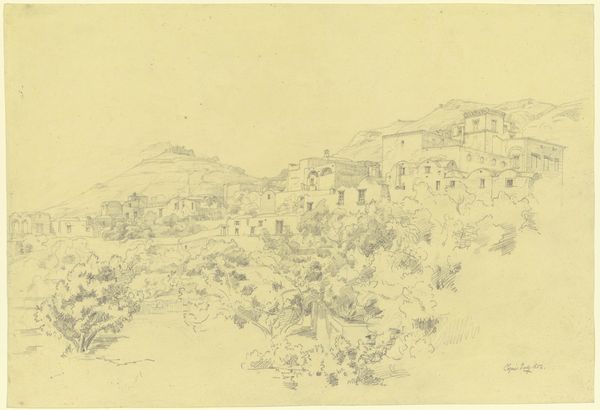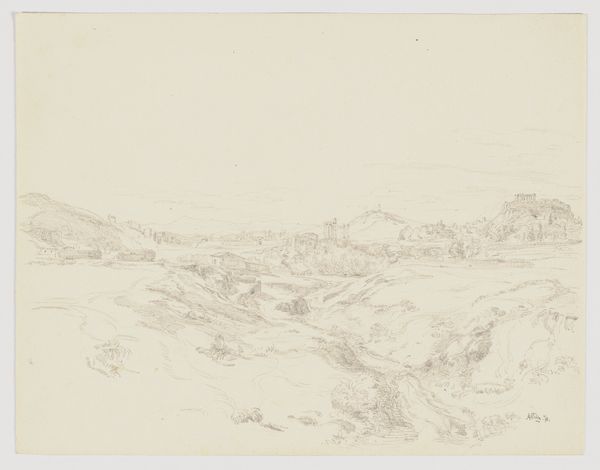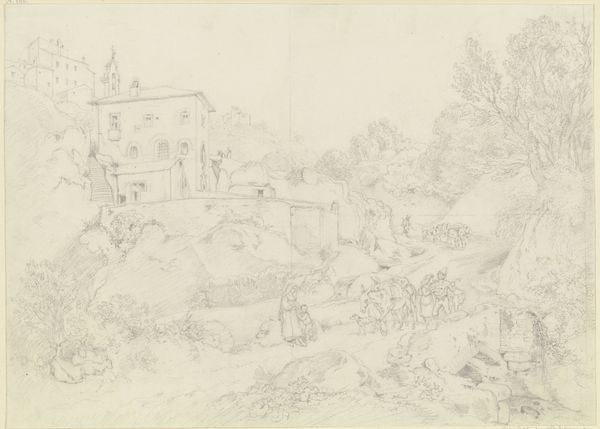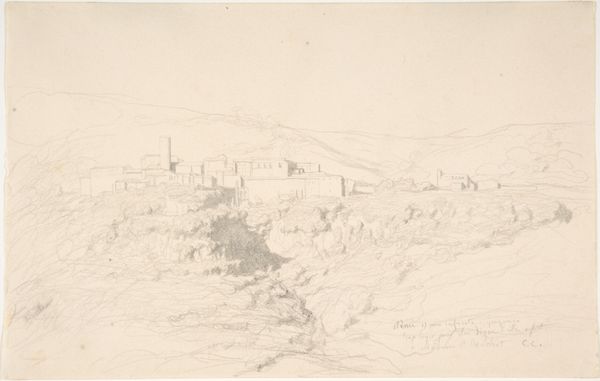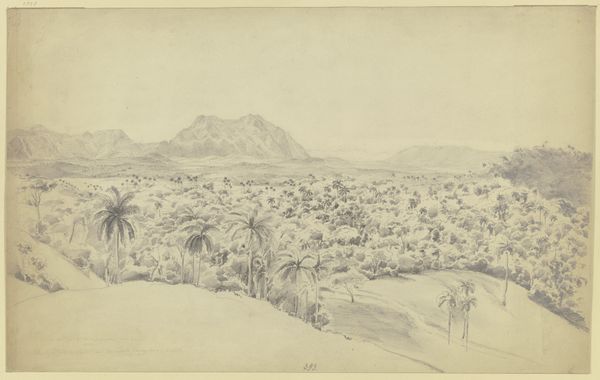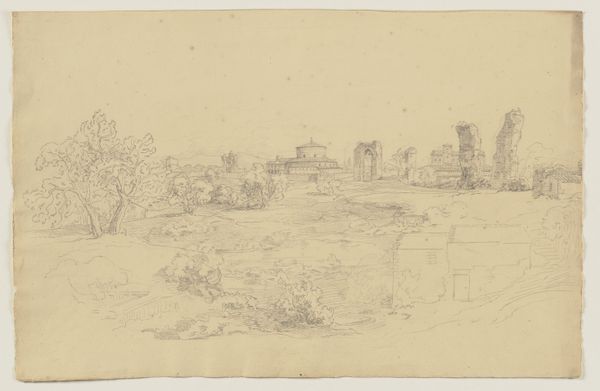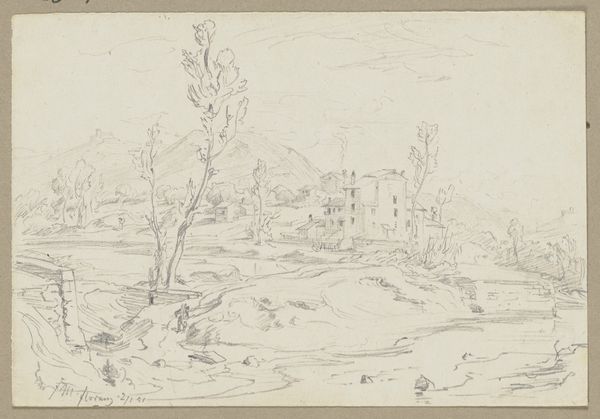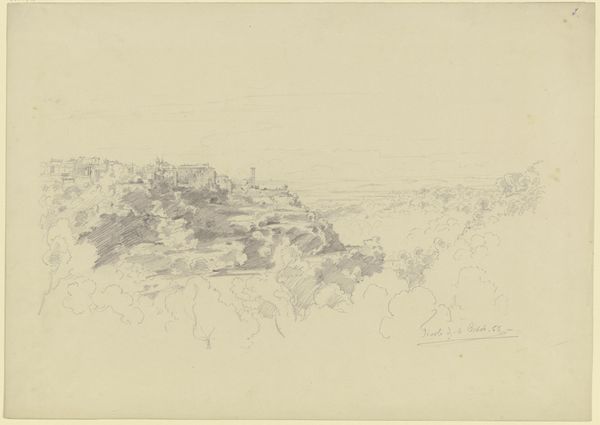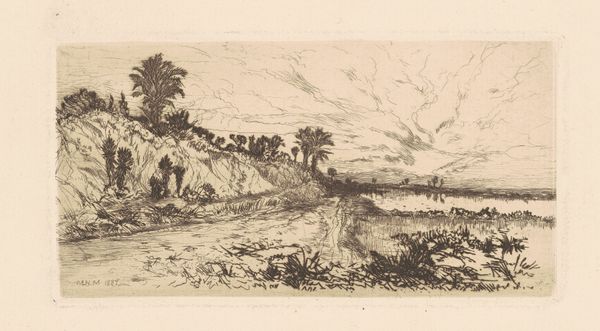
drawing, plein-air, paper, ink
#
drawing
#
16_19th-century
#
plein-air
#
landscape
#
paper
#
ink
#
romanticism
#
cityscape
Copyright: Public Domain
Editor: This drawing, "View of Terracina," was created by Friedrich Eisenlohr in 1828 using ink on paper. There’s a real delicacy to the rendering; the buildings seem to almost float above the landscape. How do you interpret this work? Curator: I see a window into the social and political currents of the 19th century, framed through the lens of Romanticism. Consider the cityscapes – how does Eisenlohr represent Terracina, and for what audience? Was this idyllic vision intended to distract from the period’s societal unrest and growing urban inequalities? Editor: I hadn't thought of that. So the seemingly neutral depiction of the city might actually be participating in a certain… narrative? Curator: Precisely. Think about the figures that *aren’t* there. The focus on architecture and landscape arguably erases the presence of working-class individuals. We must ask: whose stories are privileged, and whose are silenced? Moreover, this romanticized perspective of a foreign location caters to a wealthy elite embarking on their own voyages. Does the artwork serve to perpetuate the colonial imagination and capitalist structures of the time? Editor: It's amazing how much history can be embedded in a simple landscape drawing. It’s much more loaded than I first realized. Curator: Indeed. Analyzing art through an intersectional lens reveals hidden power dynamics and prompts critical reflection. I’d encourage you to look into gender and landscape theory in your future studies. Editor: This has really shifted my perception. Thanks for opening my eyes. Curator: And thank you, this was an engaging conversation that continues to fuel my research interests as well.
Comments
No comments
Be the first to comment and join the conversation on the ultimate creative platform.

